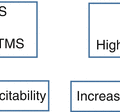© Springer International Publishing AG 2018
Stefano Masiero and Ugo Carraro (eds.)Rehabilitation Medicine for Elderly PatientsPractical Issues in Geriatricshttps://doi.org/10.1007/978-3-319-57406-6_1515. Thermal Rehabilitation of Geriatric Patients
(1)
Center for Traditional & Complementary Medicine, Milan State University, Milan, Italy
(2)
World Health Organization (WHO) Coll. Center for Traditional & Complementary Medicine, Milan State University, Milan, Italy
15.1 Introduction
While being one of the oldest known treatment methods, thermal rehabilitation medicine has not been acknowledged as much as it deserves by the scientific community. Thermal healthcare includes three steps: prevention, care, and rehabilitation. These steps are integrated with a new focus on health and well-being. Following this approach, we expect that hundreds of thousands of people will recognize stays at thermal facilities as an option to protect their physical integrity and achieve a well-being status.
Hydrotherapy is the use of water in various physical conditions and with different chemical compositions through the implementation of a variety of methods, aimed at treating and preventing health problems, as well as at preserving good health.
Hydrotherapy should be divided into two parts in consideration of its development as a whole: one of these—called, more appropriately, crenotherapy (from the Greek krene, which means “source”)—uses the specific chemical properties of so-called mineral waters, while the other basically leverages on the physical properties of water.
15.2 Crenotherapy
Two types of crenotherapy exist—internal and external (that includes balneotherapy).
Internal crenotherapy can be administered via hydropinotherapy (or drinking therapy), irrigations (vaginal, nasal, oral, intestinal, or rectal), and inhalations.
Hydropinotherapy is a treatment approach that uses mineral waters for drinking. The term comes from the Greek hydro (water) and pino (drink). The therapy consists in the intake of specific amounts of liquid at a given temperature and at pre-set time intervals throughout the day. Hydropinotherapy is indicated to treat urinary tract disorders, as well as bowel diseases and general gastroenteric disorders.
Thermal waters can also be used to treat chronic irritations and inflammations of the upper and lower respiratory tract. Thermal inhalation therapies can be administered in a variety of forms and approaches aimed at achieving the desired effects, classified according to a number of factors, including the chemical properties of the used mineral waters, the physical characteristics of the inhaled substances, the features of the appliances, and the dispensing mode.
Balneotherapy uses water and the mineral properties of the salts dissolved in it to treat some medical conditions, such as osteoarticular diseases. Muds, sands, and medicinal clays (also known as “fangotherapy”) are also used with medical purposes. Balneotherapy is usually practiced in spas.
15.3 Hydrotherapy
Although motor disorders, connected with disabilities, are frequently observed at a later stage in life, clinical, psychological, and social conditions need to be addressed when dealing with geriatric patient rehabilitation. Such conditions add up to purely functional disorders, resulting into a complex and intricate picture for which intervention measures and procedures can hardly be identified (though this is not impossible). There is no doubt about the importance of treating elderly people despite their possible disabilities and frailties and to overlapping negative life events: the functional recovery to the level preceding the disease is a goal that can be pursued even when people get older.
Geriatric patient’s rehabilitation is based on the consideration of loss events that are not confined to a specific organ or system affected, but on the entire disease that caused the disability [1].
Thermal rehabilitation could play a primary role in this respect by using water and its properties.
Hydrotherapy is a very old therapeutic approach made up of several techniques, which developed through centuries in multiple aspects. Nowadays, this approach is used to treat a variety of disorders and diseases, as well as for rehabilitation and to improve the patient’s quality of life in general [2].
Hydrotherapy, in a strict sense, leverages on the properties of water, such as floating, temperature, and hydroactive pressure, regardless of the potential pharmacological properties connected with the presence of mineral salts.
A large amount of papers describe techniques including, in particular, balneotherapy to treat a variety of orthopedic, heart, and venous disorders, also involving domains like neurological physiotherapy [3] and gastroenterology, thus demonstrating the broad range of traditional indications for use of this method. The adopted methods are also simple to apply and cheap; nonetheless they require training of operators and patient’s supervision, in order to ensure their implementation [1].
More recently, besides considerations deriving from the traditional use of these methods, several scientific studies were carried out and are now producing evidence on safety, effectiveness, and appropriate provision of these therapies [4]. At present, rehabilitation in water is crucial to ensure a modern and effective functional recovery of patients with orthopedic and neurological disorders [5].
The unique properties of water ensure its efficacy as a therapeutic agent. These include, most importantly, its ability to retain and release heat. Rehabilitation in water is founded on “Archimedes’ principle,” stating that any object, immersed in a fluid, is buoyed up by a force equal to the weight of the fluid displaced by the object, so that such object is lighter the deeper it is immersed. For example, the human body, when immersed vertically, is apparently reduced to 95% of its real weight if immersed up to the calves, to 80% when water reaches the thighs, to 50% up to waistline level, to 20% up to the armpits, to 7% at the base of the neck, and to 3% when totally immersed; this results into easier movement in water compared to the external environment when, in the event of traumas, cerebrovascular events, or orthopedic surgery (fractures, joint replacement, etc.), it would be impossible, difficult, or even harmful to load real weight on the limbs [6, 7].
Stay updated, free articles. Join our Telegram channel

Full access? Get Clinical Tree




